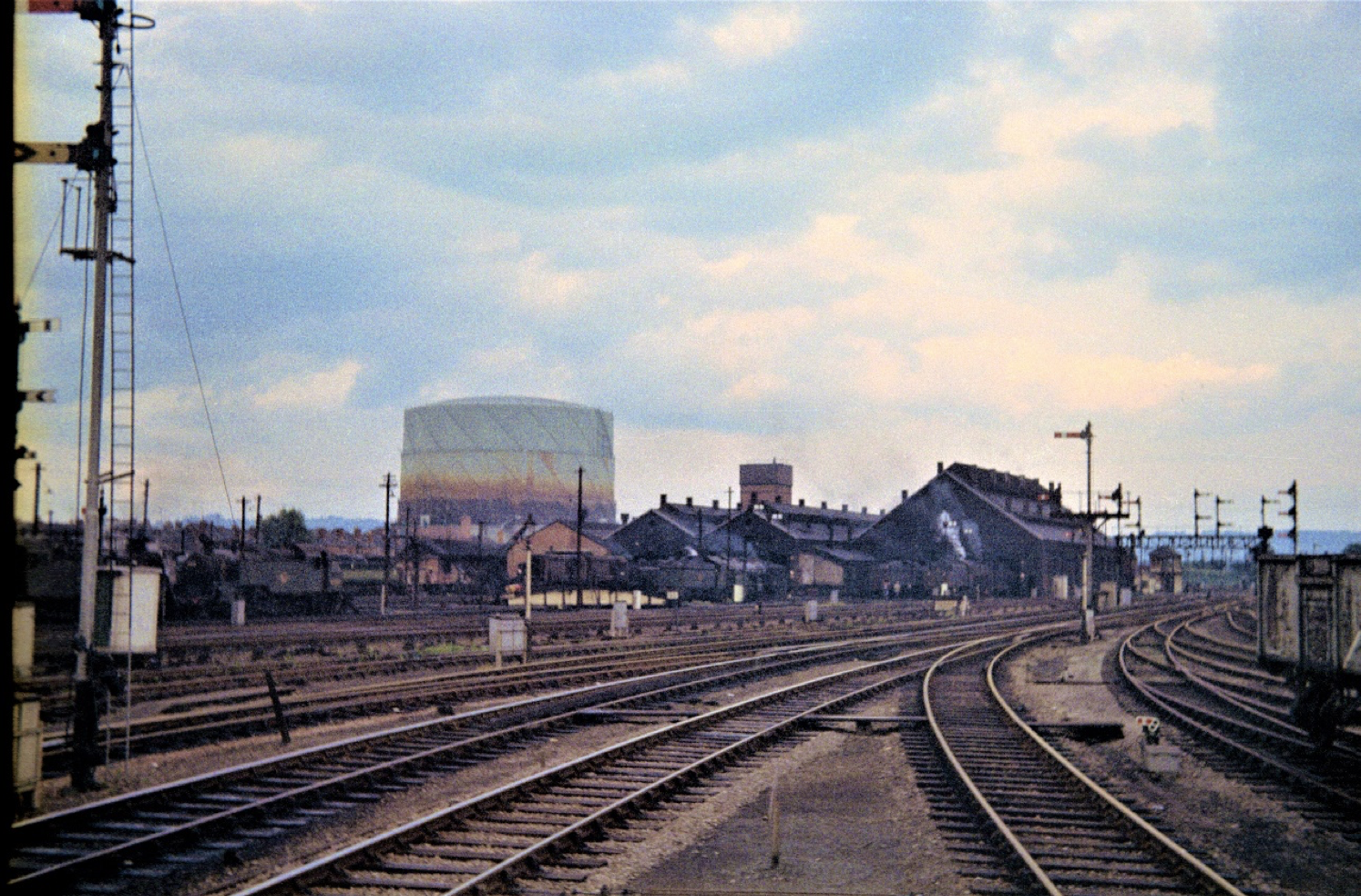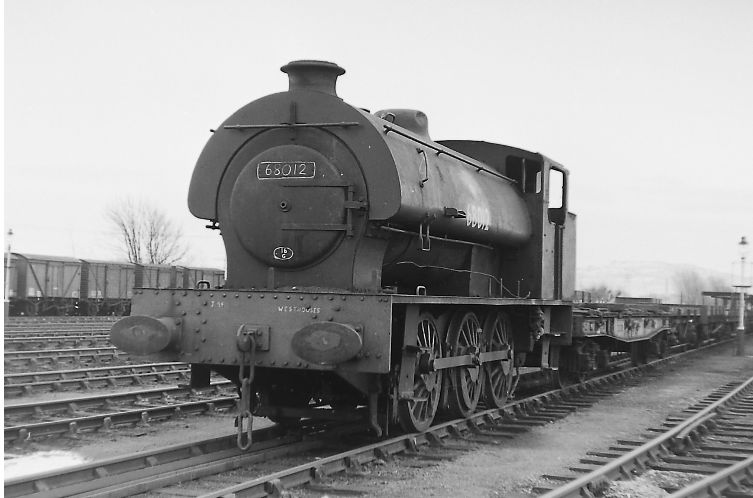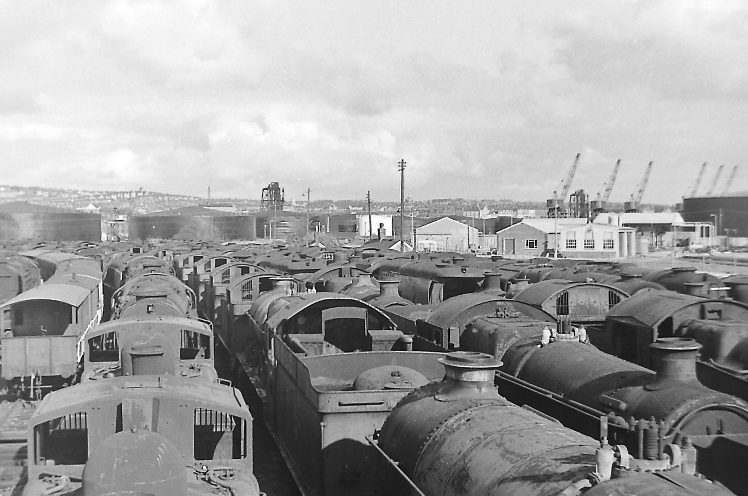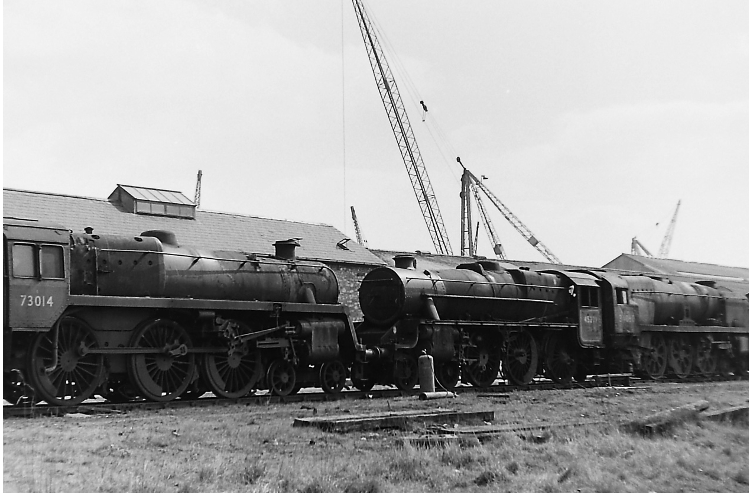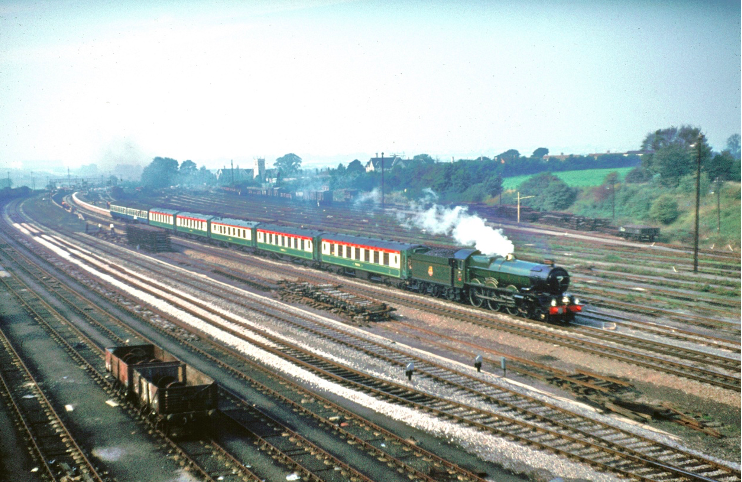The end of steam in Gloucester
Despite the ending of regular steam operations in the Gloucester area at the end of 1965, sporadic incursions did occur during the early part of 1966, although confined to forays on freights from the north. I continued working in London until September 1969, and so my visits to Gloucester remained sporadic. Consequently, it was not easy to keep up to date with local events, and most of my memories are based on my observations from weekend visits home.
However, ‘B1’ 4-6-0 No. 61173 was recorded on 2 February 1966, No. 61013 on 13 February, No. 61035 on a train of ammonia tanks on 26 February, and No. 61199 recorded on a steel train on 14 June. It was also reported (RO) that ‘Black 5’ No. 44780 got as far as Gloucester working a passenger train from Wolverhampton on 16 July 1966 in defiance of the steam ban. The last steam loco positively reported was on 13 August when No. 45493 appeared (Railway World, October 1966).
Cheltenham St James and Malvern Road stations were finally closed from 3 January 1966, and with this, all local services in the Gloucester area were withdrawn. The one exception was the 17.00 Gloucester to Cheltenham, which was diverted to Lansdown and was still occasionally steam-hauled at this stage. A solitary passenger service from Leamington Spa to Gloucester also remained on the ex-GW route from Stratford-upon-Avon, but finally ended on 25 March 1968. However, freight services continued to use the route until 1976 when a landslip brought about its complete closure.
With the run-down of steam on the Southern Region, withdrawn steam locomotives destined for South Wales scrapyards started to appear. On 6 February 1966, No. 82044 was seen in the T-sidings, whilst No. 34085 was parked in Over sidings. On 19 June 1966 I recorded a string of locos led by a ‘Merchant Navy’ in a freight on the centre road at Central Station.
Lines of dead locos including Standards and ‘Merchant Navies’ could often be seen passing through Gloucester, becoming a regular sight in the latter part of 1967 following the electrification of the Bournemouth line in July. On 12 November I photographed ‘WC’ Pacifics Nos. 34013/100 and Standard ‘3’ 2-6-2Ts Nos. 82019/29 parked on shed at Horton Road in transit to South Wales, along with Ivatt ‘2’ 41312. Other withdrawn locos seen at Gloucester between 25 October and 10 November 1967 included Standard ‘4’ 2-6-4Ts Nos. 80015/6/85 and 80133/9/43/6/52.
On 20 January 1968, Nos. 34093/5, 73092 and 76009 were in Gloucester; and Nos. 34036/52, 73020 and 76079 on 11 February; whilst on 9 March Nos. 30067/9, 34018 and 73037/155 were recorded. On 24 February 1968 I was able with my new Exa SLR camera to record locomotives awaiting onward transfer from Gloucester for scrap, including ‘J94’ 0-6-0ST No. 68012, languishing in Over sidings. This was a particularly interesting locomotive as it was involved in working the last train, an SLS brake-van special, over the Hopton incline on the Cromford and High Peak line on 30 April 1967, in tandem with No. 68006. At that time, the ‘J94’ was allocated to Buxton shed, although by the time I saw it at Over it was displaying a hand-painted 16G (Westhouses) shed-plate.
We also took several trips to South Wales to view scrapped locomotives. 107 locomotives had been recorded at Barry as early as 7 August 1965. On 22 October 1967 we visited Cashmores and the United Wagon Company in Newport, and Woodhams at Barry, and recorded over 200 locomotives. Unfortunately, the slides I took were not terribly successful. However, on 1 April 1968 I went again with Jeff and Roger to the South Wales scrapyards and took a few more photographs.
‘J94’ 0-6-0ST No. 68012 rests in Over sidings on 24 February 1968 en route to South Wales for further use following transfer to the National Coal Board.
Industrial steam
With the end of steam on BR my attention was drawn for a while to industrial steam locomotives. The ‘Railway Observer’ contained records of industrial loco types and their locations, and I also obtained a booklet published by the Warwickshire Railway Society in 1968 entitled ‘Industrial Steam locomotives of Southern England and South Wales’. It is interesting to note that at that time steam locos were still active at many collieries including 39 in South Wales and one in Somerset, as well as at 5 opencast sites. The booklet also listed 10 ex-GW ‘5700’ class 0-6-PTs used by LT and based at their Neasden depot: L89 to 95, and L97 to L99.
Castle Meads Power Station at Gloucester had an Andrew Barclay fireless 0-4-0F (2126) built in 1942 but was only used as a standby loco for coal handling. The booklet also listed locos at SWGB Gloucester Road works in Cheltenham, and at Fairfield-Mabey Engineering Co in Chepstow, adjacent to the railway bridge over the River Wye on the approach to Chepstow station.
A general view of the Woodham’s scrapyard at Barry Docks taken on 22 October 1967. Ex-GW types predominate, including a ‘King’ 4-6-0 in the foreground. A good number of Southern Pacifics can also be seen, including at least one un-rebuilt Bulleid example in the middle distance.
The scene at Cashmore’s yard, Newport on 1 April 1968. Locomotives awaiting the scrap merchant’s torch are Standard ‘5’ 4-6-0 No. 73014, ‘Black 5’ 4-6-0 No. 45271 and ‘WC’ Pacific No. 34060.
The rise of preserved steam
One of the first steam locomotives to undergo restoration to working order was ‘King’ No. 6000 King George V which was kept at Bulmer’s in Hereford, and first steamed on their sidings in autumn 1968. A rake of loco-hauled Pullman coaches was also restored in an individual livery. I managed to get to Stoke Gifford to photograph the ‘King’ on its inaugural run, on 2 October 1971 at the head of a seven-coach train en route from Hereford to Tyseley, passing the newly completed Bristol Parkway station. It was only a matter of time before pressure would be applied to British Railways to allow main-line running again, and main-line steam returned from 10 June 1972.
‘King’ class 4-6-0 No. 6000 King George V heads east past Stoke Gifford yards on 2 October 1971 with a special train from Bulmers Hereford to the Great Western Society at Tyseley via Didcot. This was the first occasion on which a privately-owned steam locomotive was authorised to run on the BR network since the end of steam in 1968.
